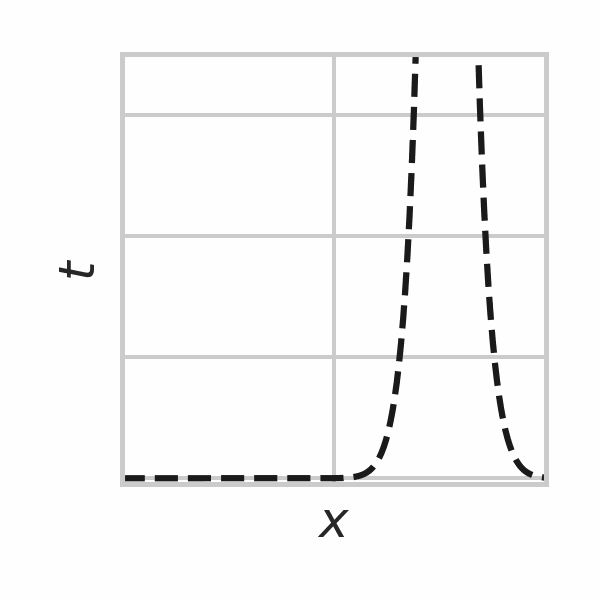🚧 Note 🚧 : This repo is still under construction.
This repository contains experimental data and reference implementations of the relative entropy coding algorithms that were used in the paper
Greedy Poisson Rejection Sampling
by Gergely Flamich.
The paper proposes the Greedy Poisson Rejection Sampler (GPRS), a rejection sampling algorithm based on Poisson Processes.
The main goal of GPRS is to be utilized in a channel simulation protocol for encoding random samples from a target distribution using as few bits as necessary.
Concretely, given a target distribution
bits, where
Interestingly, GPRS provides a "rejection sampling" dual of A* coding / A* sampling / the Poisson Functional Representation. For a related algorithm, see the Adaptive Greedy Rejection Sampler / Greedy Rejection Coding.
The paper proposes three variants of GPRS:
-
Global GPRS: The most general variant, as it is applicable to distributions
$Q$ and$P$ over arbitrary Polish spaces, whenever the target distribution$Q$ is abosolutely continuous with respect to the coding distribution$P$ . The minimum requirements for implementation are:- We can simulate
$P$ -distributed samples. - We can evaluate the density ratio (Radon-Nikodym derivative)
$r = dQ/dP$ . - We can evaluate the complementary CDFs
$w_P(h) = \mathbb{P}_{Z \sim P}[r(Z) \geq h]$ and$w_Q(h) = \mathbb{P}_{Z \sim Q}[r(Z) \geq h]$ .
The number of steps
$N$ this variant of GPRS takes on average is$ \mathbb{E}[N] = \Vert dQ/dP \Vert_\infty = 2^{D_\infty[Q \, \Vert \, P]}, $ where$\Vert \cdot \Vert_\infty$ denotes the ($P$ -essential) infinity norm and$D_\infty[Q , \Vert , P]$ denotes the Renyi$\infty$ -divergence of$Q$ from$P$ in bits.Pseudo-code for global GPRS is given in Algorithm 3 in the paper.
- We can simulate
-
Parallelized GPRS: This variant has the same mathematical requirements as global GPRS. However, if we have
$J$ available parallel threads, we can utilize them to speed up GPRS by a factor of$J$ .Pseudo-code for parallelized GPRS is given in Algorithm 4 in the paper.
-
Branch-and-bound GPRS: This variant can be far more efficient when the underlying space has more structure. There are two notable sub-variants:
-
Split-on-sample GPRS: In addition to the requirements of global GPRS, this variant requires that:
- the sample space is 1-dimensional
- the density ratio
$dQ/dP$ is unimodal. - we can simulate samples from the proposal
$P$ truncated to arbitrary intervals$(a, b)$ .
The expected number of step
$D$ this variant of GPRS takes on average before termination is$\mathbb{E}[D] = \mathcal{O}(D_{KL}[Q \, \Vert \, P])$ , which is optimal.Pseudo-code for this variant is given in Algorithm 5 in the paper.
-
General branch-and-bound GPRS: In addition to the requirements of global GPRS, this variant requires that:
- There is a splitting function that takes a subset
$B$ of the sample space, and returns a two-set partition of it, i.e.$\mathrm{split}(B) = (L, R)$ where$L \cap R = \emptyset$ and$L \cup R = B$ . - We can compute
$w_P(h)$ and$w_Q(h)$ truncated to some subset$B$ of the sample space - We can simulate a sample from the proposal
$P$ restricted to some subset$B$ of the sample space.
See the discussion in Appendix F of the paper for precise details.
Pseudo-code for this variant is given in Algorithm 6 in the paper.
- There is a splitting function that takes a subset
-
The repository provides JAX implementation of all of the above mentioned variants.
Please cit the paper if you find it useful in your research:
@inproceedings{flamich2023gprs,
title = {Greedy Poisson Rejection Sampling},
author = {Flamich, Gergely},
booktitle = {Advances in Neural Information Processing Systems},
year = {2023},
}We provide our code as a Python 3 package written in JAX, alongside with some Jupyter notebooks.
To run the code, first clone the repo and install the package:
pip install --upgrade pip
pip install -e .The data used to create the plots in Figures 1 and 2 can be found at:
.
+-- data
+-- figure1
| +-- points.csv
| +-- stretched_density_ratio.csv
+-- figure2
+-- global_gprs_and_a_star.csv
+-- gprs_and_a_star.csv
+-- gprs_and_a_star_runtime_vs_inf_div.csv
